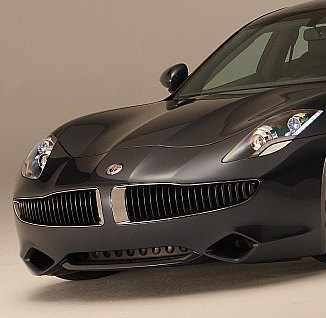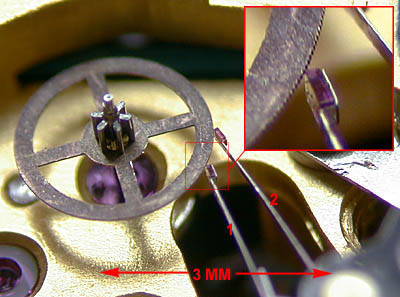
|
Tuesday 28 Apr 2009 2 comments
Imagine that a person x is telling you about their problems.
Although the problems were caused or exacerbated by their own choices,
x tells you how much someone else sucked for not doing
exactly what x wanted them to do to help (on short
notice, on x's terms). Imagine that you listen, you try
to understand, you find an appropriate way to express sympathy,
you offer no advice because none was solicited and because
the timing is all wrong (you'd do better to save it for when
x is in a better frame of mind).
That's how my day started this morning. Later in the day, I sawed and glued and planed some wood. I was presented--as always happens in the workshop--with a choice: be annoyed by how wood isn't flat and how it is prone to tearing and chipping, or find a way to work with it. A month ago, at the end of a posting about free will, I wrote When all is said and done, will and initiative remain worth cultivating at a practical level.Part of what I had in mind was continually remembering how much our lives are in our own hands. I say continually remember because it's so easy to forget. It is easy to react automatically rather than thoughtfully, it is easy to be lazy, and it is easy to put too much blame on circumstances. There's more to say about will and initiative, much more, but I'll stop here for now. To be continued. Monday 27 Apr 2009 1 comment
What 1960s TV cartoon character does the front end of
the Fisker Karma remind
you of?
 My answer here. Sunday 26 Apr 2009 comment?
Back in 2001, I went to a Bill Bruford's Earthworks concert in Los Angeles.
I'd liked Bruford's work from when he'd drummed with King Crimson,
and I went to his L.A. show without knowing anything about his new band.
I didn't know until I got there that they played jazz.
I shared a table with a few other King Crimson fans, all of us in our mid 40s, none of us there because it was jazz, all of us there because it was Bill Bruford. There isn't much jazz that grabs me, but the musicians were fine and it was a treat to see them up close in a small club. Mr. Bruford was kind enough to meet with the audience afterwards. Knowing that he was touring to play new music, I didn't say a word about how much I liked his drumming on albums that were by then over twenty years old. I just said I enjoyed the show and thanked him for coming to Los Angeles. I'm reading Bruford's autobiography now. From p.237: It's 2001 and I'm in Hollywood, playing a four-night run at Catalina Bar & Grill, a small jazz place on West Sunset Boulevard. [...]I recall seeing at least one woman getting his autograph. Thursday 23 Apr 2009 2 comments 
shy lizard and not-so-shy cactus Sunday 12 Apr 2009 5 comments
In online forums, I've seen some people saying how happy they are
that not only did the US Navy rescue a captain held hostage, but
that snipers killed three pirates. By happy, I mean satisfied--even
delighted in some cases--to see pirates shot.
Somali pirates have already vowed revenge. Time will tell whether this starts a cycle of violence; I don't claim to know. But I find these lines from the Tao Te Ching apt: If you need to take action, only do what is necessary; Wednesday 08 Apr 2009 1 comment 
Sunday 05 Apr 2009 comment?
If you wear a wristwatch, it probably uses either
a quartz oscillator or a balance wheel.
There is (at least) one other choice. In the 1960s, the most accurate wristwatch in mass production--the Bulova Accutron--used a metal tuning fork driven by electromagnets. Rather than ticking, it hummed at 360 Hz. It was used by astronauts, it was the first wristwatch adopted by railroads (pocket watches had been used previously), and it was an official US Gift of State. On the outside, it was the only wristwatch whose second hand appeared to move smoothly. (Decades later, Seiko would offer watches with smooth second hand motion, costing upwards of $3000 apiece.) Inside was a curious mixture of precision mechanics and early-transistor-era electronics. To convert the tuning fork's oscillation into rotary motion to drive the watch's gear train, a jewel-tipped finger (1) attached to a tine of the fork engaged a fine-toothed wheel. Each oscillation of the fork advanced the wheel by one tooth. The other jewel-tipped finger (2) was fixed, and served as a ratchet to keep the wheel from turning backwards.  The teeth on the wheel's edge are 10 microns tall. I can only
imagine the skepticism that its inventor must have encountered
when developing the movement.
The teeth on the wheel's edge are 10 microns tall. I can only
imagine the skepticism that its inventor must have encountered
when developing the movement.
I find the Accutron watch to be one of the more endearing products of the twentieth century. Photo by Walt Odets, included here by kind permission. For more photos and information on the tuning fork movement, see Dr. Odets' excellent article. |
current journal
contact rss/xml atom/xml FAQ archive
|